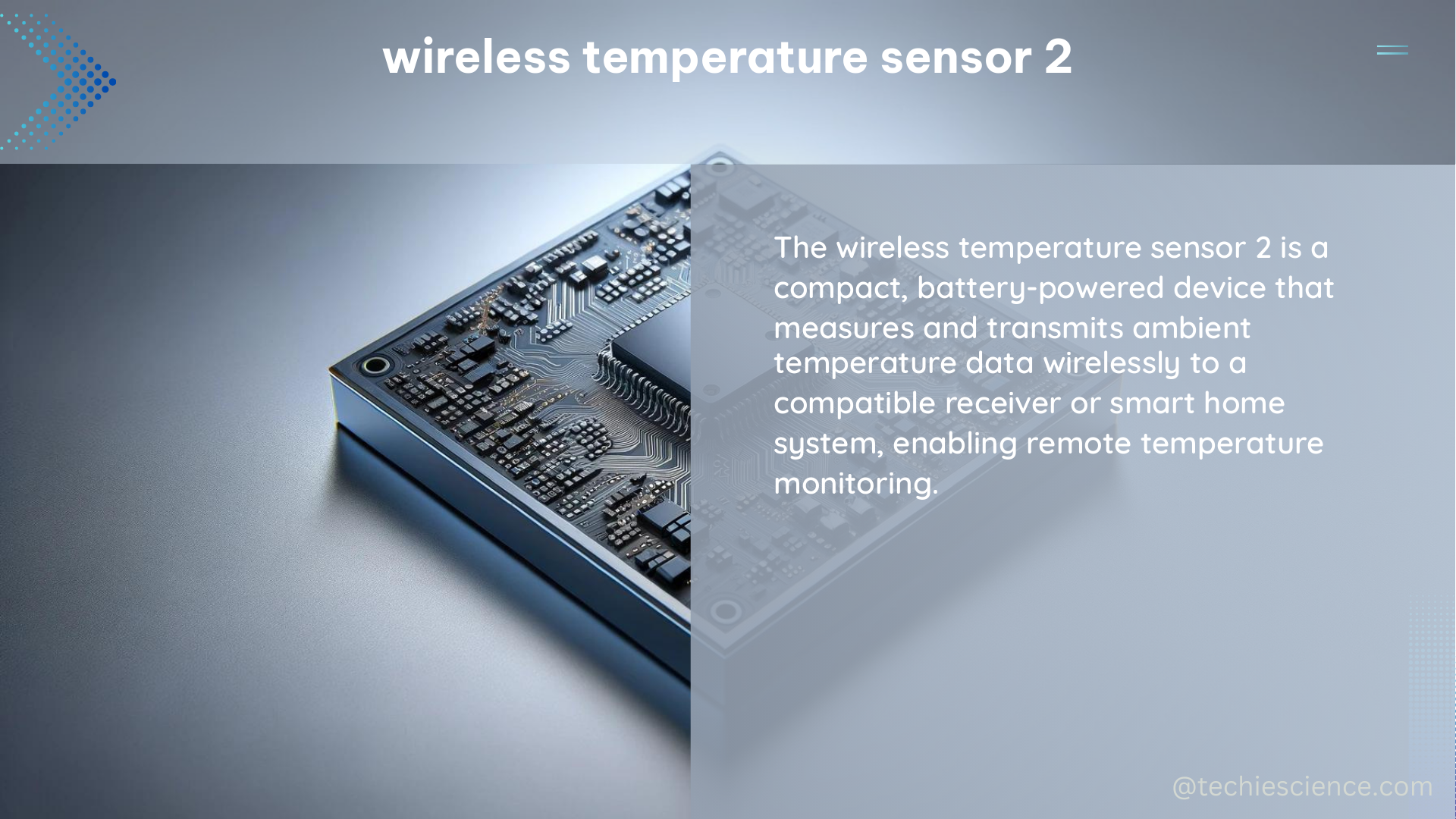The wireless temperature sensor 2 is a cutting-edge device designed to measure temperature with unparalleled accuracy and reliability. This sensor utilizes advanced technology to provide precise temperature readings in a wide range of applications, including industrial, medical, and personal monitoring.
Measurement Range and Accuracy
One of the key features of the wireless temperature sensor 2 is its impressive measurement range. The sensor is capable of accurately measuring temperatures from -55°C to +150°C, making it suitable for use in a vast array of environments and applications. This wide range is achieved through the use of high-precision semiconductor temperature sensors, which are known for their ease of integration, general ruggedness, and low cost.
However, it’s important to note that while semiconductor temperature sensors offer these advantages, they also have limitations in terms of accuracy and stability. Factors such as poor thermal chip design and slow response time can contribute to these limitations. To ensure accurate readings, it is crucial to properly calibrate the wireless temperature sensor 2 before use.
Signal Processing and Wireless Capabilities

The wireless temperature sensor 2 is equipped with advanced signal processing capabilities, allowing it to convert temperature measurements into a measurable signal that can be transmitted wirelessly. This is achieved through the use of a wide spectrum of transducer and signal transformation approaches, each with its own technical complexity.
The wireless transmission of temperature data is facilitated by the inclusion of a wireless transceiver module, such as Bluetooth, Wi-Fi, or Zigbee. This wireless functionality enables the sensor to be easily deployed and used in a variety of settings, without the need for physical connections or wiring.
Power Supply and Durability
To ensure continuous monitoring and operation, the wireless temperature sensor 2 is designed to be self-powered or rechargeable, reducing the need for external power sources. This feature is particularly valuable in applications where access to power outlets may be limited or inconvenient.
In addition to its power-efficient design, the wireless temperature sensor 2 is also engineered to be flexible and durable. The sensor is designed to interact directly with the skin surface, making it suitable for use in wearable biosensor applications. This level of durability and flexibility allows for easy deployment and use in a wide range of environments.
DIY Wireless Temperature Sensor 2 Build
Building a DIY wireless temperature sensor 2 requires a few key components and tools. Here’s a step-by-step guide to help you get started:
Materials and Tools Needed:
- Temperature sensor module (e.g., DS18B20)
- Microcontroller board (e.g., Arduino)
- Wireless transceiver module (e.g., Bluetooth, Wi-Fi, or Zigbee)
- Battery or power source
- Enclosure or housing
- Soldering iron and solder
- Wire strippers and cutters
- Breadboard and jumper wires
Step 1: Connect the Temperature Sensor Module
Connect the temperature sensor module to the microcontroller board using jumper wires. Refer to the datasheet and schematic diagram of the temperature sensor module to ensure proper connection.
Step 2: Program the Microcontroller
Write a program for the microcontroller to read the temperature data from the sensor module and transmit it wirelessly using the transceiver module. You can use the Arduino Integrated Development Environment (IDE) or any other programming software compatible with the microcontroller board.
Step 3: Connect the Wireless Transceiver Module
Connect the wireless transceiver module to the microcontroller board using jumper wires. Follow the datasheet and schematic diagram of the transceiver module to ensure proper connection.
Step 4: Power Up the System
Power up the system using a battery or any other power source compatible with the microcontroller and transceiver modules.
Step 5: Test the System
Test the system by placing the temperature sensor module in a temperature environment and checking if the wireless transceiver module is transmitting the temperature data correctly.
Step 6: Enclose the System
Enclose the system in a housing or enclosure to protect it from environmental factors and ensure safe handling.
By following these steps, you can create your own DIY wireless temperature sensor 2 that can be used for a variety of applications, from industrial monitoring to personal health tracking.
References:
- Sensors for daily life: A review – ScienceDirect.com
- Wearable Sweat Biosensors Refresh Personalized Health/Medical …
- https://irp.fas.org/doddir/dod/jp2-01-3.pdf
- Sensing and Sensor Fundamentals – SpringerLink
- https://www.jcs.mil/Portals/36/Documents/Doctrine/training/jts/jts_studentguide.pdf?ver=2017-12-29-171316-067

The lambdageeks.com Core SME Team is a group of experienced subject matter experts from diverse scientific and technical fields including Physics, Chemistry, Technology,Electronics & Electrical Engineering, Automotive, Mechanical Engineering. Our team collaborates to create high-quality, well-researched articles on a wide range of science and technology topics for the lambdageeks.com website.
All Our Senior SME are having more than 7 Years of experience in the respective fields . They are either Working Industry Professionals or assocaited With different Universities. Refer Our Authors Page to get to know About our Core SMEs.